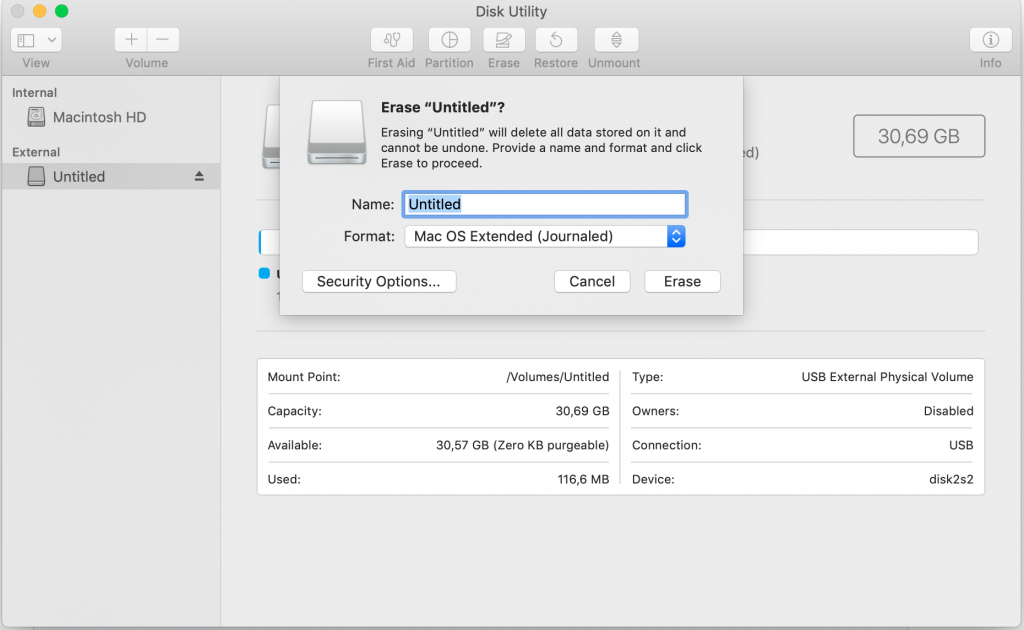

Just like Disk Utility, you can use the command to format disks, erase drives and more. So, I followed the below simple and quick steps to free up space. diskutil is the command line version of Disk Utility, the macOS application used to manage hard drives. In my situation, I do not want to remove 100% of the purgeable files, instead I need to free up most of the purgeable space with minimal effort. Click Utilities from the menu bar and select Terminal from the drop-down list. If Disk Utility stopped repairing Macintosh HD in macOS, you can then try to fix it with Terminal.
#MACOS DISK UTILITY SOFTWARE#
However, if you prefer to remove the purgeable space then one way is to use one of the third party software like CleanMyMac X, DaisyDisk, etc…Īnother way is to manually free up the storage space by removing the purgeable file. If a message says that the disk utility cannot repair the disk, go to the next solution. macOS will automatically remove them when the system needs more free-space. Normally, you don’t need to remove the purgeable file form the storage space. Abandoned files and cache which are left after uninstalling an application.If a local file is synced with iCloud, then the local file is considered as purgeable.Old files which are not used for a long time.Here are the steps you need to follow - Step 1. One of the best solutions is to repair disk issues with Disk Utility. Until then, these snapshot files are classified as purgeable files. After its done, return to the Utilities window to reinstall macOS. These files are automatically purged when the backup disk is accessible by time machine. If the backup disk is not accessible by time machine, it uses the local storage to store the snapshots.Here is the list of few of the major contributors of purgeable space: Purgeable storage is the space occupied by files in the drive which were identified by the macOS system as removable in case if it needs more free-space. Or, since you’re running macOS Sierra, you can just click on the Siri icon and say Launch Disk Utility. Next, there’s a keyboard shortcut to get to the Utilities folder Command + Shift + U from the Finder.

I would like to share what I learned and what I did to free up some of the space in my laptop. First, one can go to Finder > Go > Utilities, then double-click on the Disk Utility icon.
#MACOS DISK UTILITY DOWNLOAD#
Download CtlnaAHCIPort from the downloads section of this forum. To enable an unsupported SATA Controller, follow the steps below.
#MACOS DISK UTILITY HOW TO#
On searching, I figured out the details of purgeable storage and how to reduce them. The next step is to enable an unsupported SATA Controller so that macOS can find the controller and as a result, macOS will be able to communicate with the disk. After getting the answer for difference in free space shown in different windows, I got couple of more questions:


 0 kommentar(er)
0 kommentar(er)
